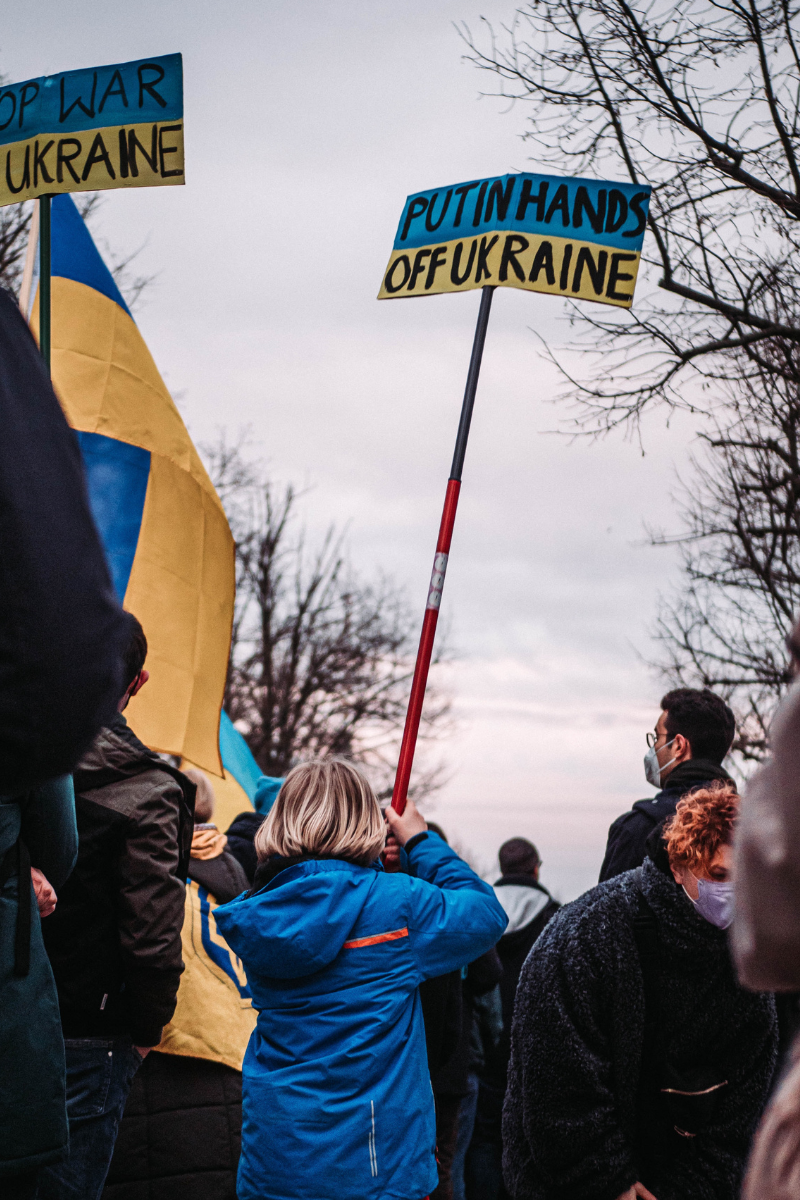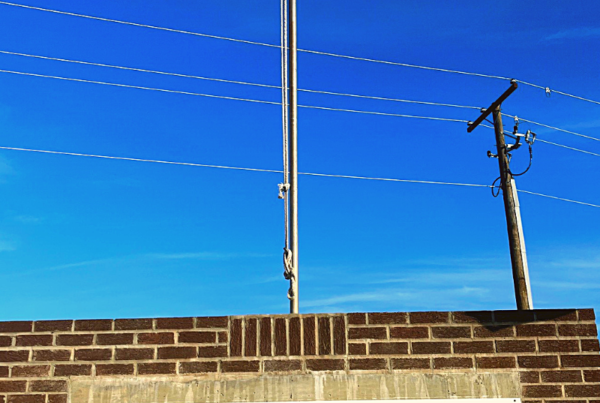Almost every day, my WhatsApp messenger floods with heartbreaking images and footage from friends inside Idlib, the last opposition holdout in the more than ten-year Syrian war. Regime prisons stuffed with scrawny, battered detainees, young men blindfolded by Syrian soldiers and tossed into mass graves already filled with decaying bodies, and small children with hollowed faces combing through rubble in search of those they love most in the world.
Like Ukrainians, Syrians in rebel-held pockets are also victims of Russian aggression and indiscriminate shelling from the skies. Yet, we rarely hear stories emanating from the conflict-battered country. Syrian bloodletting, even when it reached its peak several years ago and even with the confirmed use of outlawed chemical weapons, failed to generate the kind of U.S. attention and assistance that Ukraine has received since Russian forces invaded in February of this year.
Syrians are hardly alone in their ongoing agony. Scores of individuals trapped everywhere, from Yemen to Afghanistan, Burma to Ethiopia and beyond, are enduring and dying from extreme food insecurity, poverty, conflict, and carnage – but to know more, you’d have to dig deep into the vortex of the news media.
Typically, international events garner limited coverage in American news media, often relegated to a small window at the end of a news broadcast, in the back pages of a newspaper, or buried deep in the digital folds of a media website. Yet Ukraine has shattered the mold, dominating the bandwidth and leading the charge of all breaking stories.

A recent analysis by the Quincy Institute for Responsible Statecraft found that the time spent by the three mainstream networks – ABC, CBS and NBC – on Ukraine “has exceeded or equaled coverage of all other wars in the last 31 years.” This included more bandwidth dedicated to the Eastern European war than the clashes in which the United States was directly engaged.
“Coverage of Ukraine even eclipsed by a wide margin the three networks’ coverage of the chaotic end of Washington’s 20-year war in Afghanistan last summer. Last August, the month with the most intense coverage, the three networks devoted 345 minutes (or only about 60 percent of last month’s total Ukraine coverage) to the war’s abrupt denouement,” the report stated. “Once U.S. forces had fully withdrawn by August 31, network coverage of Afghanistan fell precipitously to a total of just 103 minutes between September 1 and the end of the year, despite the desperation of the country’s humanitarian situation that followed (and persists).”
Similarly, a recent study by aid-centric news site The New Humanitarian underscored that the “amount of news attention received by other humanitarian entanglement pales in comparison to the constant flood of articles on the war in Ukraine,” including the devotion of entire homepages by top-rated news sites to the conflict.
Furthermore, Russia has since become the most sanctioned nation on the planet and swiftly ostracized from the international community, in a way no other country or government has, despite the infliction of atrocities on innocent populations.
So why the differing standard?
Indeed, it’s an uncomfortable, unfair fact of life that some injustices will always be illuminated more than others. Policy experts point to the notion that what is happening in Ukraine is bound not to stay in Ukraine, and that the crisis comes with a slew of regional and global implications. Perhaps most importantly, Russia is a nuclear power, and the risk of such escalation has Washington and its allies most concerned. Together, the United States and Russia possess some ninety percent of the world’s nuclear arsenal – which means many, many millions of lives hang in a delicate balance.
Geographical closeness also plays a pivotal part – meaning Europe will naturally have a more substantial interest in the chaos playing out in its backyard than in more far-flung places.
Others point to the galvanizing leadership of actor-turned-president Volodymyr Zelensky, who from the very beginning refused U.S. offers for evacuation and has captured audiences worldwide with his stoicism in the face of adversity, providing the perfect backdrop for eyeballs and interest. In addition, the story of a small nation fighting a much more powerful military force tooth-and-nail – and proving victorious on many fronts – is the kind of real-life feel-good fodder that rarely stems from the trenches.
The war in Ukraine also carries the hefty weight of widespread economic and geopolitical fallout, and one that impacts developing countries already embroiled in profound catastrophe. The invasion has sent oil prices soaring, rattled the global food supply, and induced a broader sense of political and social unrest and instability.
The stunning Russian onslaught has in addition ignited an uptick in military spending by several western and democratic countries, a heightened unity and desire to join NATO by some in Europe and prompted many leaders to dramatically re-assess their foreign policy and national security needs on a level not seen since the end of the Second World War.
By the same token, there is a direct correlation between the amount of public attention an issue receives, and the number of individual donations made to the cause along with more significant mobilization of government funds and resources to a conflict.
“We all feel for Ukraine, but in some ways, it is hurtful too,” one Middle Eastern diplomat recently told me, staring out at the signature yellow and blue Ukrainian flags flapping over an array of Embassies in Washington D.C. “Just a few years ago, tens of thousands of Yazidis were killed, captured and sold as sex slaves by ISIS in Iraq. That too was a genocide, and yet no country mobilized their support to help them like this.”
The backlash has come on hard and fast. It is indeed a challenge to try to justify to a mother who has lost her baby to a bomb in Afghanistan or to a father who watched his entire family blister and melt to death having been tossed into a fire in Burma, that somehow their suffering is less worthy than that of Ukraine. Some commentators have called the Eastern European coverage an example of racial bias, suggesting that the West has more empathy for Christians and those “with blonde hair and blue eyes” sending a dangerous message that some human beings are more valuable than others.
Then there is the refugee issue. All major news networks (including cable) sent significant around-the-clock teams to neighboring nations to cover the flow of distraught Ukrainians out of their homeland, amplified by groups and volunteers worldwide on standby to offer humanitarian aid and support. The generally kind and compassionate coverage of those forced to flee with little more than the clothes on their backs is – in overarching terms – not ordinarily framed the same way for those escaping other impasses, such as the protracted firehouses of Syria, Yemen, Haiti, Africa, or Central America when the matter is characterized as more of a policy problem.
Subsequently, leading news figures have exacerbated such a narrative. A BBC expert stressed that the Ukraine war was especially emotional given that he was compelled to watch those with “blonde hair and blue eyes being killed every day.” An Al Jazeera presenter lamented that Ukraine was a case of “prosperous, middle-class people” resembling “any European family that you would live next door to” thrust into the war theater. A French BFM TV journalist also stated that the war in Ukraine was in stark contrast to “Syrians fleeing the bombing of the Syrian regime backed by Putin,” as this was a situation of “Europeans leaving in cars that look like ours to save their lives.”
Social media companies have also been criticized for allowing anti-Russian, violent posts to flourish despite the fact that these posts are considered prohibited content. In addition, crowdfunding websites have raised funds for Ukrainian battalions without being suspended, which is normally considered a breach of conduct codes.
For now, the devastation playing out in Ukraine remains atop the political and media agenda, and funds are flowing through to the country at record pace. However, Ukraine does run the risk of slipping into the dark trap that eventually ensnares all lengthy wars – the longer they go on, the less interest they generate.
There are other places on the planet worthy of media attention and public support. For one, the Tigray region of Ethiopia is soon entering its second year of unimaginable horrors punctured by the systematic use of rape as a weapon of war, mass slaughter, the obstructing of life-saving aid deliveries and more than two million displaced.
When was the last time this made headline news? Never.
Having spent much of this year on the ground in Ukraine, both pre- and post-invasion, I’ve been compelled to ask myself where the roots of my next assignment should lie and whether I’d be better served diving into the many forgotten conflicts that never get covered by the everyday media or returning to the battlefields of Ukraine despite the swarm of journalists covering that story.






